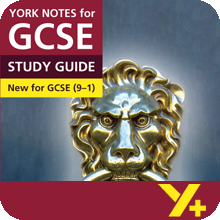Examiner's Notes
You assessed this answer as Grade 7.
Hover over the highlighted text to read the examiner’s comments.
Question: Read from ‘“At this festive season of the year ..."’ to ‘in a more facetious temper than was usual with him’ (Stave One, page 7).
Write about some of the ways that people in the novel take responsibility for the poor and how this is presented in the novel.
In your response you should:
- refer to the extract and the novel as a whole
- show your understanding of characters and events in the novel
- refer to the contexts of the novel.
Dickens was a social campaigner and his fight to help the poor of Victorian England made a huge impact in his time and we still look to Dickens when thinking about stories about how who should take responsibility for the poor. Victorian laws, such as the Poor Law, treated the poor as nuisances who should just work harder, rather than a group of people that we as a society, should take responsibility for and help. Scrooge embodies this cruel view of the poor and the novel could be seen as work of protest.
This extract from the novel shows the reader Scrooge’s deliberate blindness to the hardships faced by the poor. When the charitable gentleman mentions those in ‘want of common necessities’, Dickens uses the typical formal language of the day, but in fact this is a euphemism for lack of sanitation, food, education, secure homes, and so on, alluding to the terrible suffering of the poor. The reader sees this later in the book with the ‘Yellow, meagre, ragged, scowling’ children, ‘Want’ and ‘Ignorance’ that are revealed by the Ghost of Christmas Present, as well as by the ‘beetling’ and filthy criminal poor that frequent Old Joe’s shop. Dickens does not want us to pretend that we don’t know how bad poverty can be.
Scrooge asks the question, ‘Are there no prisons?’ which is rhetorical. The gentleman answers this, but the laying down of his pen implies an awareness, that would be clear to the reader, that Scrooge has a very different view of his responsibility to the poor. This question is later returned to Scrooge by the Ghost of Christmas Present to enable Scrooge to see the wickedness of his attitude to the poor. Scrooge’s depiction of the ‘treadmill and Poor Law’ in ‘full vigour’ refers to the two of the most notorious Victorian solutions to taking ‘responsibility’ for the poor with the building of human treadmills and the creation of workhouses under the Poor Law that provided a deliberately harsh regime to try to ‘discourage’ people from falling into poverty. Scrooge uses the adjective ‘idle’ to characterise the poor, which, in his mind, enables him to deny responsibility for their suffering.
Dickens also refers to a horrific belief of the time that if the poor died from disease and malnutrition then indeed it would be a benefit to society. Scrooge says it would ‘decrease the surplus population’ and this is brought back to Scrooge as he looks upon Tiny Tim and is told that Tim will die if nothing changes in his life. We don’t know what Tim’s illness is, but it is clearly made worse by lack of access to medical treatment due to poverty. Dickens makes it clear to us that Scrooge has both the power and the responsibility to improve the Cratchits’ living conditions.
We never find out the names of the gentlemen. You could say Dickens is using them to personify the opportunities to take responsibility for the poor that are offered to us not just to Scrooge in a fictional setting but also in the real Victorian world. The reader is shocked when Scrooge is described as ‘in a more facetious temper than was usual with him’ as Scrooge has clearly enjoyed his cruelty.
Scrooge is redeemed at the end of the novel. This is because the book is a morality tale that should have a positive ending. He becomes ‘as good a friend, as good a master, and as good a man’ as he can be, and fully takes responsibility for his role in looking after the poor. The symbolic action of giving Bob the money to buy another ‘coal-scuttle’ takes us back to the Scrooge of Stave One, who measures out the coal in the office piece by piece, and shows us that Scrooge’s journey of social responsibility is finally complete.
